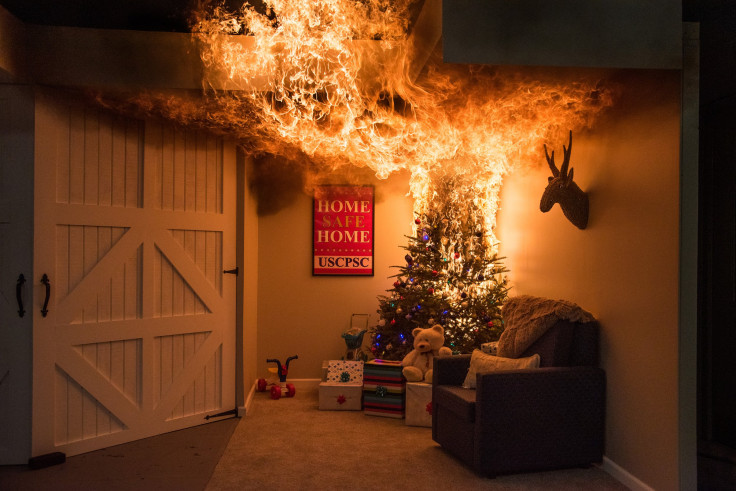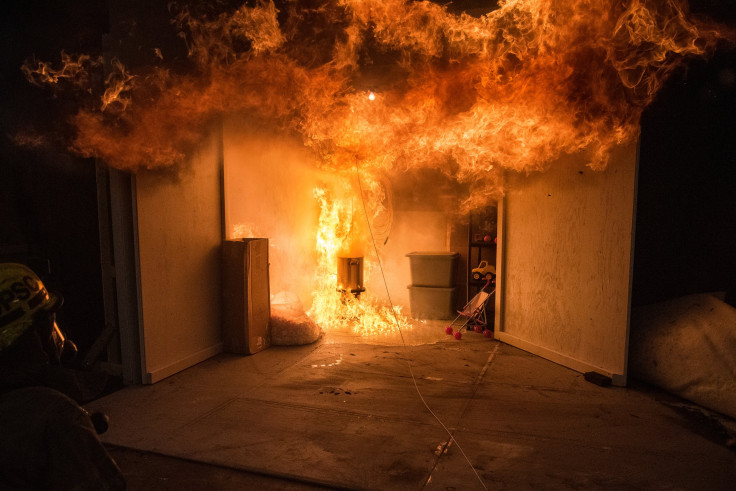
As families prepare for the holidays, the U.S. Consumer Product Safety Commission (CPSC) and interior designer Sabrina Soto join together to share the latest data and safety tips for holiday decorating, cooking and toys.
"The holiday season is a festive time with family and friends and we, at CPSC, want that time to be hazard-free," said CPSC Commissioner Dana Baiocco. The holidays are a time for celebrating with family, friends and loved ones, but consumers need to be aware of possible dangers, from Christmas trees, candles or cooking fires to unsafe toys.
"As a mom and interior designer, I am delighted to join CPSC this holiday season to provide essential safety tips for consumers to follow while decorating, cooking and shopping for toys as gifts," said Soto. "It is critical people keep these safety steps in mind to prevent incidents and allow everyone to experience the joys of the holidays together."

What everyone needs to know to have a Home Safe Home during the holidays:
TOYS
Data:
- CPSC reports that in 2018 there were 166,200 toy-related, emergency department-treated injuries and 17 deaths to children younger than 15, with most of the deaths associated with riding toys and incidents of choking on small parts, like small balls and balloons.
- Toy recalls continue to decline, with 12 toy recalls in the fiscal year 2019, one involving a lead violation, compared to 172 recalls in 2008, 19 involving lead violations. Recalled toys presented choking, fire, burn and laceration hazards, among other hazards that pose a threat of death or injury to a child.
- The number of injuries associated with non-motorized scooters significantly decreased from 2014 to 2018 for children younger than 15.
Tips:
- Follow the age guidance and other safety information on the toy packaging, and choose toys that match your child's interests and abilities.
- Get safety gear, including helmets for scooters and other riding toys –helmets should be worn properly at all times and be sized to fit.
- Keep small balls and toys with small parts away from children younger than age 3, and keep deflated balloons away from children younger than 8 years old (discard broken balloons at once).
COOKING
Data:
- Cooking fires are the # 1 cause of residential fires.
- An average of 1,800 cooking fires occurs on Thanksgiving Day each year, four times the average number on any other day of the year.
- In the last two decades, there were 218 fire or scald/burn incidents involving turkey fryers, resulting in 81 injuries and $9.7 million in property loss.
Tips:
- Never leave food unattended on the stove or in the oven.
- Keep children away from the cooking area, and keep flammable items like potholders and paper or plastic bags away from the stove and oven.
- Only fry a turkey outside and away from your home –not inside your garage or on your porch. Do not overfill the oil in the turkey fryer.
DECORATING
Data:
- On average, there are about 200 decorating-related injuries each day during the holiday season, with the majority of the incidents involving falls. And in the 2017 holiday season, about 18,100 people have treated in emergency rooms due to holiday decorating-related injuries.
- In the 2018 holiday season, there were five deaths associated with holiday decorating.
- From 2014 to 2016, there were about 100 Christmas tree fires and about 1,100 candle fires, resulting in 10 deaths, 150 injuries and nearly $50 million in property damage each of those years.
Tips:
- Make sure your live Christmas tree has plenty of water, and look for the "Fire Resistant" label when buying an artificial tree.
- Place burning candles in sight, away from flammable items, and blow them out before leaving the room.
- Only use lights tested for safety by a nationally recognized testing laboratory. Throw out sets with broken or cracked sockets, frayed or bare wires, or loose connections.
© 2025 Latin Times. All rights reserved. Do not reproduce without permission.




